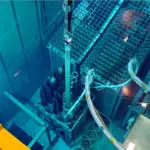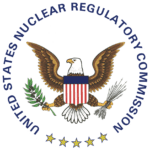Legislation introduced on Nov. 17 by a bipartisan group of senators on the Senate Committee on Environment and Public Works (EPW) will seek to strengthen the nuclear fuel supply chain, help incentivize commercial deployment of new reactor designs, and create a credit program to preserve existing nuclear reactors at risk of premature shutdown.
The American Nuclear Infrastructure Act (ANIA) of 2020, introduced by U.S. Senator John Barrasso (R-Wyoming), EPW chairman, and Sens. Sheldon Whitehouse (D-Rhode Island), Mike Crapo (R-Idaho), and Cory Booker (D-New Jersey), follows the Nuclear Energy Innovation and Modernization Act (NEIMA), which President Trump signed into law in January 2019.
NEIMA, sponsored by the same senators, requires the Nuclear Regulatory (NRC) to develop a rule to license advanced reactors, as well as greater clarity into the process by which the commission develops its budget and recovers its costs through fees. It also requires the NRC to establish performance metrics and milestones for licensing and other regulatory actions.
ANIA implements key recommendations proposed by the White House’s Nuclear Fuel Working Group (NFWG) in its April 23 report, “Restoring America’s Competitive Nuclear Advantage: A Strategy to Assure U.S. National Security.” In that report, representatives from various executive branch agencies suggested that the U.S. could regain its international standing as a world leader in nuclear energy through a three-pronged strategy that will essentially seek to strengthen the full domestic nuclear fuel cycle, possibly deny imports of nuclear fuel fabricated in Russia or China, and promote advanced reactor technologies.
A Boost for Advanced Nuclear
Among the ANIA’s key provisions are that it will empower the NRC to lead in international forums to develop regulations for advanced nuclear reactor designs. ANIA, significantly, will also provide the NRC the authority to deny imports of Russian and Chinese nuclear fuel on “national security grounds.”
The legislation is also a big win for the burgeoning advanced nuclear industry. ANIA could make the permitting process for advanced nuclear “more predictable and efficient,” and it establishes a a prize to incentivize the successful deployment of next generation nuclear reactor technologies.
Also notable is that it also requires the NRC to identify and update regulatory barriers to enable advanced nuclear technologies to reduce industrial emissions, which could have implications for nuclear hydrogen and heat.
A Federal Credit Program for At-Risk Nuclear Reactors
But the legislation also attempts to create safeguards for the nation’s existing nuclear fleet. Specifically, it authorizes a targeted credit program to preserve nuclear reactors that are at risk of premature shut down owing to economic reasons. It also “modernizes” rules that restrict investment in nuclear energy.
The bill notes that between 2013 and September 2020, 11 nuclear reactors ceased operation prior to the end of their operating licenses, and eight others were scheduled to cease operations by 2025. The credit program, overseen and administered by the Environmental Protection Agency (EPA), will involve an “emissions avoidance” program that would allocate two-year credits to reactors that are “certified.”
To apply for certification, the owner or operator of a nuclear reactor in a competitive market that is projected to retire prematurely owing to economic factors will submit an application to the EPA administrator. The application will include information about operating costs, including for average losses (calculated as average annual operating loss per megawatt-hour) that the generator expects to incur over the two-year period for which the credits would be allocated. It would also include a generator’s revenue streams, including out-of-market revenues, and capital costs, including for fuel. The administrator would also weigh the reactor’s safety record; operational and market risks; as well as potential increases of air pollutants that would result if a nuclear reactor were to stop operating.
Nuclear Supply Chain Infrastructure
ANIA could also help develop advanced nuclear fuels needed to power advanced reactors, including high-assay, low-enriched uranium (HALEU) with an assay of up to 20 weight percent of Uranium-235. It also seeks to advance identification of modern manufacturing techniques to build nuclear reactors “better, faster, cheaper, and smarter.”
Finally, it would authorize a uranium reserve “to ensure America does not lose the capacity to fuel its nuclear reactors with American fuel,” the senators said in a joint statement.
—Sonal Patel is a POWER senior associate editor (@sonalcpatel, @POWERmagazine).










